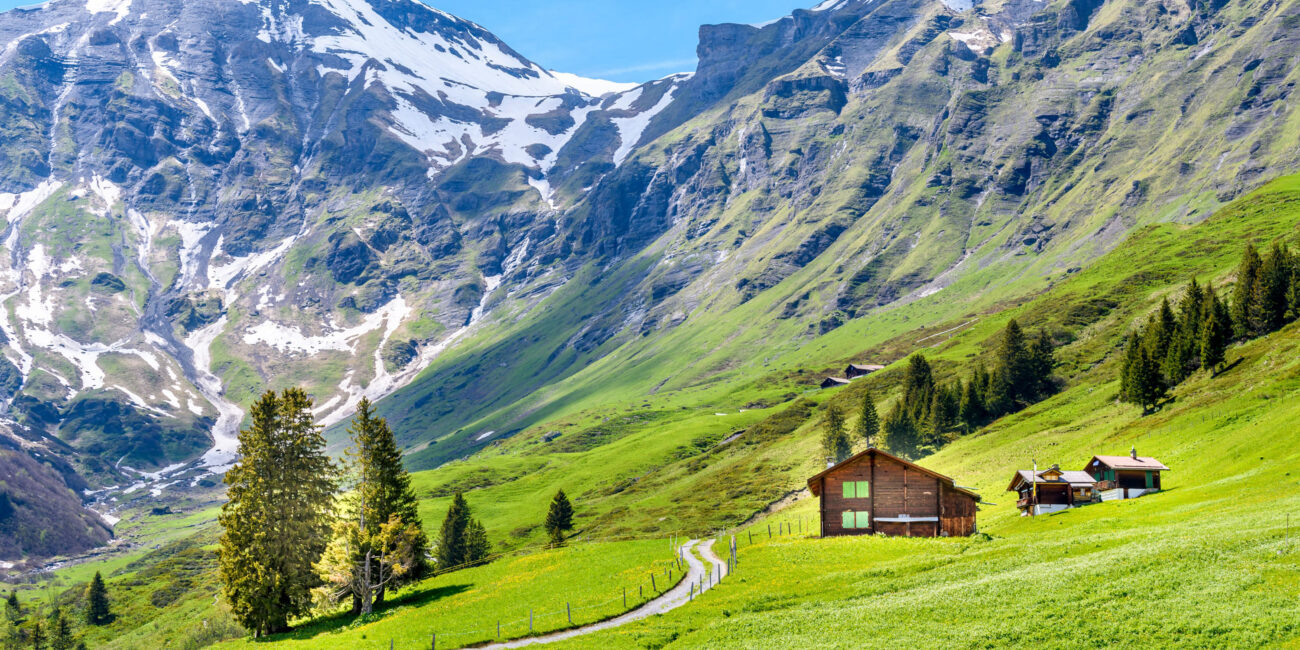Switzerland, a landlocked country nestled in the heart of Europe, is often celebrated for its natural beauty, political neutrality, and high standard of living. Despite being surrounded by powerful neighbors like Germany, France, Italy, and Austria, Switzerland has managed to maintain a distinct identity thanks to its majestic Alps, clean lakes, and efficient infrastructure. A fascinating blend of cultural richness, historical depth, and contemporary innovation is provided by this small but influential nation.
Landscape and Geography.
Switzerland’s geography is dominated by the Alps in the south and the Jura mountains in the northwest, with a central plateau region known as the Mittelland lying between them. The country has a remarkable variety of landscapes thanks to its varied topography, including towering peaks covered in snow, rolling green meadows, and sparkling lakes. Not only are the Alps, which cover about 60% of the country, a sight to behold, but they are also a major source of tourism and outdoor recreation. On the other hand, the majority of people live in the plateau area, which is also the center of economic activity.
Climate and Natural Environment.
Switzerland experiences a varied climate influenced by its complex topography. The mountainous regions experience long, cold winters and short, mild summers, whereas the lower-lying regions experience temperatures that are more moderate and pleasant. This variation results in a rich biodiversity, supporting a wide range of flora and fauna. Swiss law protects forests, wildlife, and water bodies, so environmental consciousness is deeply ingrained in the culture. The nation has put in a lot of effort to protect its natural resources, including keeping a huge number of national parks and nature reserves open.
Politics Past and Structure.
Switzerland’s history is marke by its tradition of neutrality and federalism. The alliance of three regions in 1291 to resist external dominance laid the groundwork for the modern Swiss Confederation. Over the centuries, more cantons joined this alliance, shaping the country’s federal character. Switzerland strengthened its reputation as a neutral and peaceful nation by remaining out of both World Wars. The political structure of the country is a federal directorial republic with 26 cantons, each of which has its constitution and autonomy over a variety of issues.
Cultural Varieties Switzerland.
A multicultural and multilingual nation. German, French, Italian, and Romansh are its official languages. The country’s complex cultural fabric and regional identities are reflecte in its linguistic diversity. German is spoke by the majority, particularly in the central and eastern regions. While French is dominant in the west, Italian in the south, and Romansh in some parts of the southeast. The Swiss have a strong sense of national unity despite these differences, which is emphasize by shared values like neutrality, independence, and civic responsibility.
Education and Research.
In Switzerland, education is highly value and decentralize. Although quality is guarantee by federal standards, each canton runs its education system. The country has a lot of public schools and universities that emphasize apprenticeships and vocational training a lot. Swiss universities, such as ETH Zurich and the University of Geneva, are internationally recognize for their academic excellence and research output. Science and technology are give priority in educational policy, and there is bust collaboration between academia and industry.
Transportation and Infrastructure.
Switzerland is renowne for its efficient and punctual transportation system. Even the most remote alpine villages are connecte by the country’s extensive network of roads, railways, and public transportation. The Swiss Federal Railways (SBB) is nown for its reliability and coverag, making train travel the preferre mode of transport for many residents and tourists. Urban areas are serve by trams, buses, and trolley systems that integrate seamlessly with national transportation. The country’s tunnels, such as the Gotthard Base Tunnel—the world’s longest railway tunnel—are engineering marvels that enhance connectivity across the mountainous terrain.
Conclusion.
Switzerland stands as a symbol of balance—between tradition and progress, nature and development, independence and cooperation. Its picturesque landscapes, efficient systems, and cohesive society make it one of the most admired nations in the world. Switzerland serves as an example of how a small nation can have a significant impact through effective governance, cultural respect, and forward-thinking policies, from its snow-capped mountains to its thriving cities. Switzerland continues to be a beacon of stability, prosperity, and human achievement in a world that is rapidly changing.
